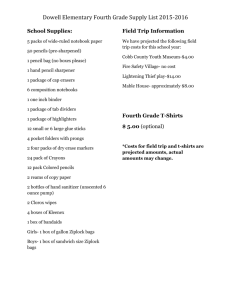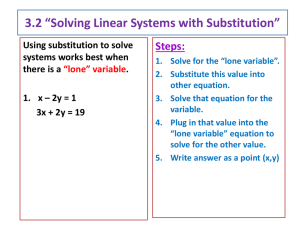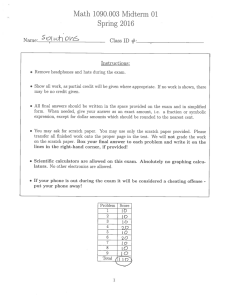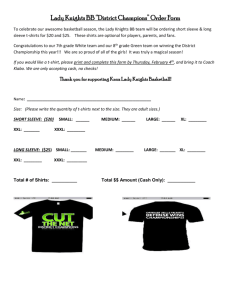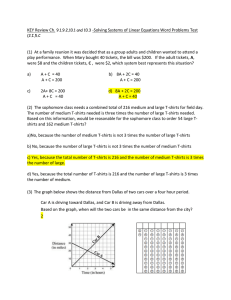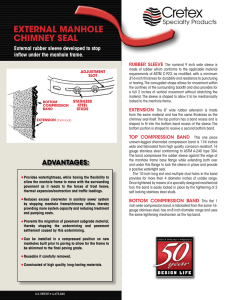3.2 c 3.2 continued ontinued
advertisement
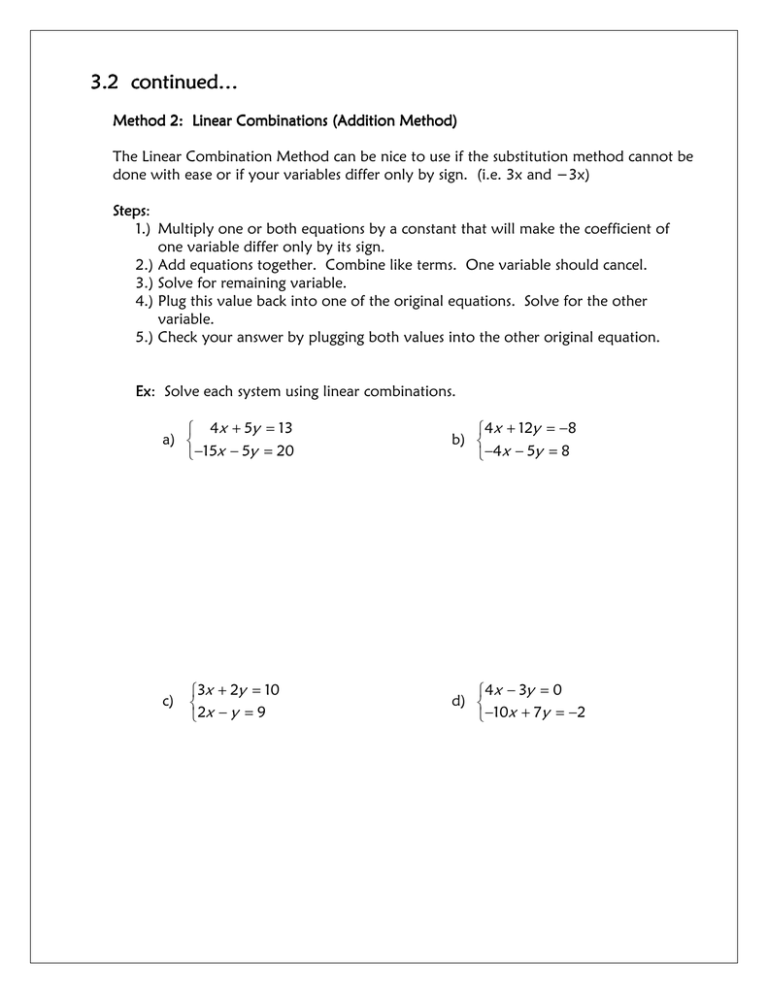
3.2 continued continued… ontinued… Method 2: Linear Combinations (Addition Method) The Linear Combination Method can be nice to use if the substitution method cannot be done with ease or if your variables differ only by sign. (i.e. 3x and −3x) Steps: Steps 1.) Multiply one or both equations by a constant that will make the coefficient of one variable differ only by its sign. 2.) Add equations together. Combine like terms. One variable should cancel. 3.) Solve for remaining variable. 4.) Plug this value back into one of the original equations. Solve for the other variable. 5.) Check your answer by plugging both values into the other original equation. Ex: Solve each system using linear combinations. 4x + 5y = 13 a) −15x − 5y = 20 c) 3x + 2y = 10 2x − y = 9 4x + 12y = −8 b) −4x − 5y = 8 4x − 3y = 0 d) −10x + 7y = −2 x − 2y = 3 e) 2x − 4y = 7 6x − 10y = 12 f) −15x + 25y = −30 Ex: Solve the following word problems using Linear Combinations. g) To raise money for new football uniforms, your school sells silk-screened tshirts. Short sleeve t-shirts cost the school $5 each and are sold for $8 each. Long sleeve t-shirts cost the school $7 each and are sold for $12 each. The school spends a total of $2500 on t-shirts and sells all of them for $4200. How many of the short sleeve t-shirts are sold? h) The band boosters are organizing a trip to a national competition for the 226-member marching band. A bus will hold 70 students and their instruments. A van will hold 8 students and their instruments. A bus costs $280 to rent for the trip. A van costs $70 to rent for the trip. The boosters have $980 to use for transportation. Find out how many the busses and vans the band will need.

